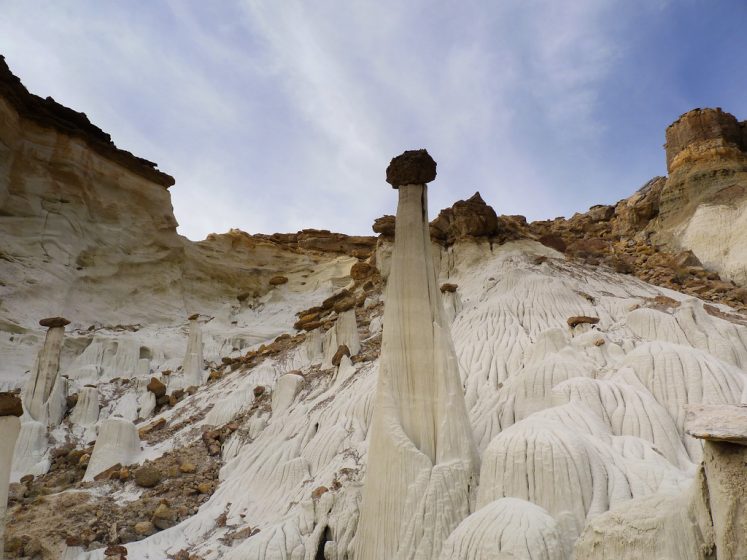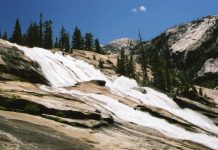If someone mentally and physically fit, he/she can hike for 4 to 5 hours. Then you should plan to visit the dry lands of Southern Utah. Here you can find one of the strangest geological sights on the continent. The most astonishing Hoodoos on planet earth lies almost, three hours north of Grand Canyon’s rarely used 9.2 miles out and back trail. The Wahweep Creek and Nipple Creek shinning under direct sunlight on the Wahweap Wash.
This hike is through a wash that can be extremely slippery if wet. However, when the trail is dry and hot their is little reprieve from the sun. The hoodoo’s wildernesses safeguard some of the most dramatic scenery in the United States, from mountain vistas to snug canyons and everywhere in between.
The trail usage may be low; a dilapidated Hanging Fence will be first of Wahweap Hoodoos. The strangest rock formation formed more then 100 million years ago when T-Rex’s roamed Utah. These hoodoos are the column of weathered rock formed due to the thick layer of soft rock is covered by a thin layer of hard rock. Sometimes, when cracks in the hard rock allow the underlying soft rock to erode.
One small cap of the hard rock is well resistant to cracking, and it protects the underlying soft rock. This cone of confined rock sooner or later takes the shape of a vertical pinnacle. The Wahweap Hoodoos generally described as three separate groupings or coves. The White Hoodoo, Hoodoo Central, and the Towers of Silence are separated by just a few miles.
Also, the white sandstone spires, which have been named everything from goblins to white ghosts, are unique geology of the sun-scorched lands of the Southwest. Moreover, close to Wahweap Hoodoos, you can take a short walk to the darker side where you can find brown toadstools make an appearance just off the highway at the Rimrocks.
The Wahweap Hoodoos are a pictorial group of pinnacles and balanced rocks enclosed by undulating mounds and cliffs of white Entrada sandstone. The Paiutes believed that hoodoos are the remnants of people who were turned to stone.















